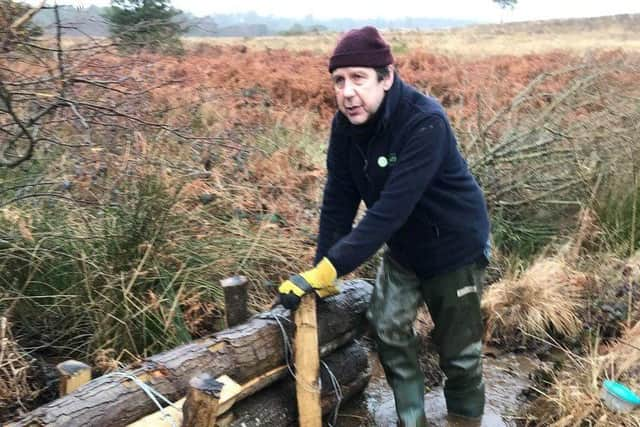Bigger, Better, Joined up – Ashdown Forest’s Nature Rescue!
and live on Freeview channel 276
Working with 42 other local land owners and managers, Ashdown Forest is bidding for a government grant that would design and develop measures to connect a vast area of land – around 7400 hectares for the benefit of nature.
Mark Infield, Ashdown Forest’s Landscape Recovery Manager, said: “Together with our neighbours including local farmers, landowners, Sussex Wildlife Trust, The Woodland Trust, East Sussex County Council and Southern Water – we want to create a landscape that is bigger, better, and joined up. Our plans include creating and connecting more thickets and hedgerows and improving woodlands, meadows and steams that will enable nature to thrive.”
Advertisement
Hide AdAdvertisement
Hide AdAshdown Forest is applying for a grant from DEFRA’s Land Recovery programme designed to promote sustainable farming while providing a boost to nature recovery. If the bid is successful the group will spend two years working on an ambitious proposal.


Mark added: “Working with our like-minded partners we want to make a positive impact on the landscape which will reverse practices that have had a negative effect on nature. It will take years but once nature is allowed to get back to work, positive changes will follow! For example, by allowing scrub, thickets, wild roses, and brambles to grow provides a nursery for native trees that in turn will encourage other species that have been absent from the area for decades.”
Animals including the pine marten, beaver, turtle dove, red backed shrike and nightingale were once part of the area. So too were juniper trees, now gone. One of the biggest tools for restoring nature across the landscape will be the use of livestock that graze the land. Managing the number of deer in the area will also be important.
Mark said: “We hope local people and visitors will embrace the scope and intention of our plans. We want to encourage citizen participation so that private gardens, churchyards, and other public spaces can become part of the new landscape. We will also be working with our partners to improve public access and the visitor experience and delivering nature-based education. We really hope this is the start of a new chapter for nature here!”